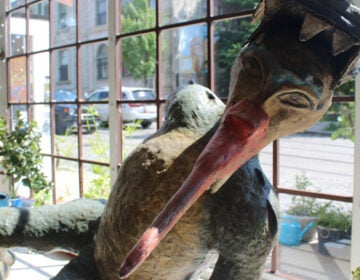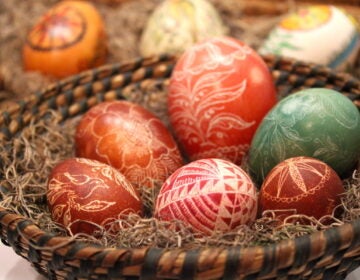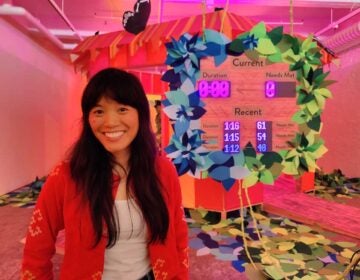Displaced Iraqis and Syrians in Philly try to shift the ‘refugee narrative’ through art
The refugees of the “Friends, Peace, & Sanctuary” exhibitions want people to look past their scars of war and see them as creative members of American society.
Listen 3:39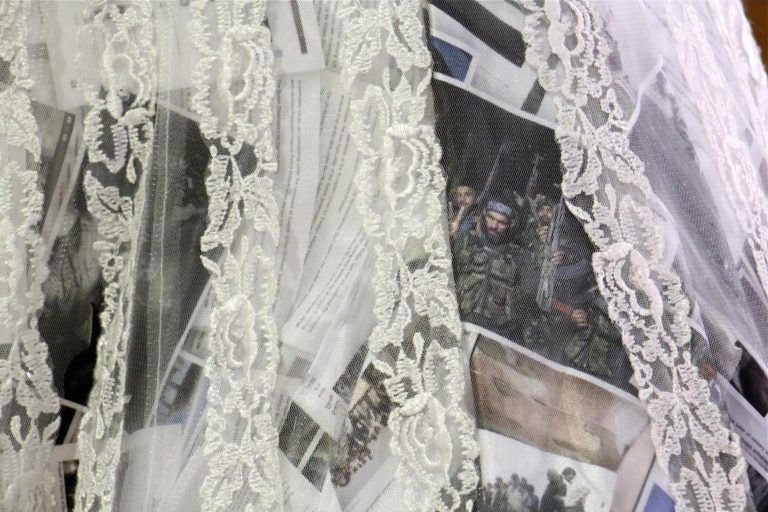
Beneath the sheer fabric of Asmaa Diab's "Refugee Wedding" dress are the words and images that haunt her. (Emma Lee/WHYY)
April 5 is an auspicious day for Asmaa Diab, though she welcomes it with a heavy heart.
In 2013, it was the day her family boarded a plane with one-way tickets to Egypt.
“This is the hardest day for me. We lost everything,” Diab said, describing the day her family left their native Syria, where civil war had broken out two years earlier.
In those two years, Diab’s family moved at least eight times between their native city of Homs and Damascus, though they were never far from incessant bombings.
“It’s too dangerous for three children to stay there and to see too many people [dead] in the street,” Diab said.
The war raged on. Diab’s husband fell ill, and she mended clothes to make ends meet.
Then, on April 5, 2016, after three years of security screenings, the family boarded a plane to the United States.
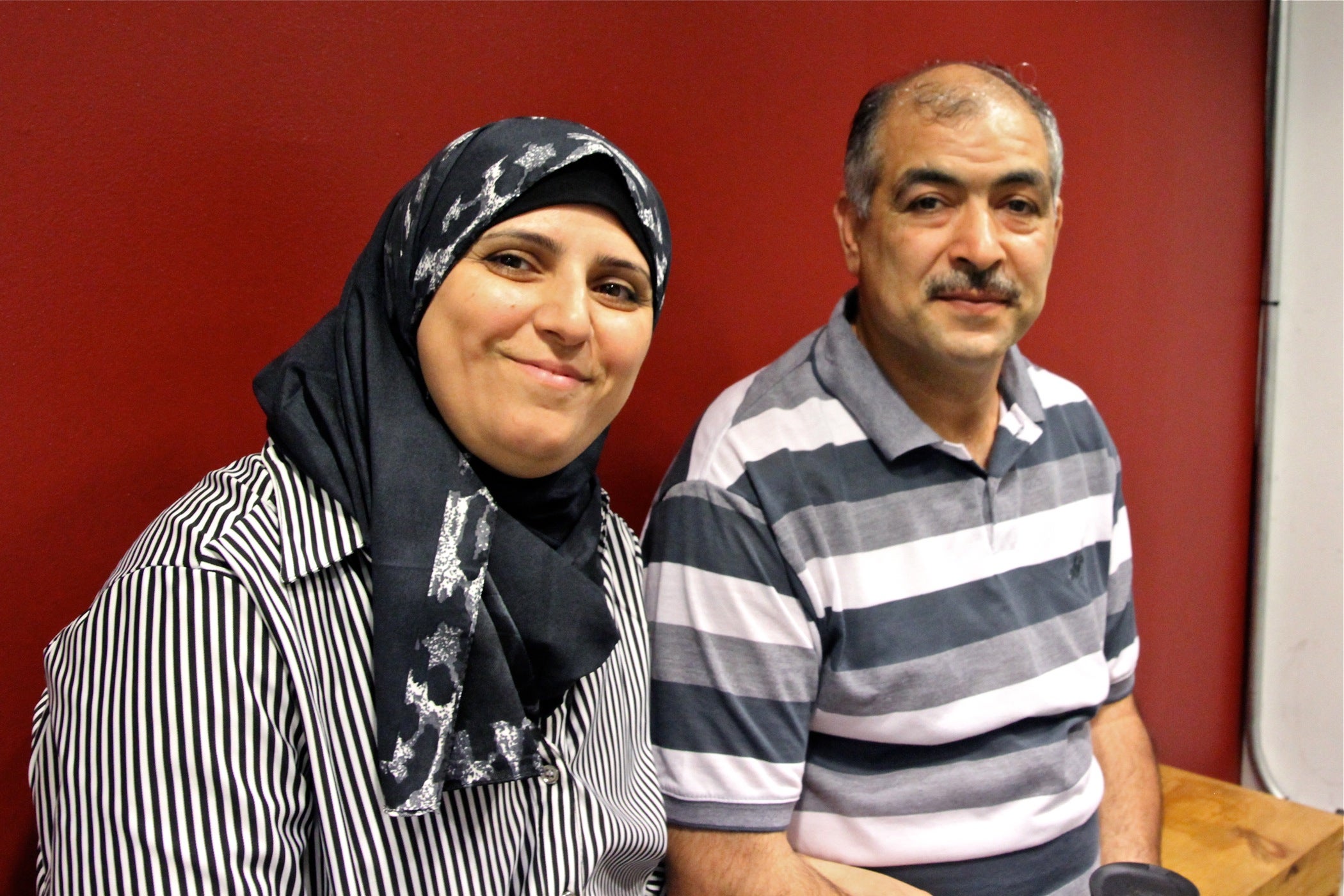
They are just five of more than 6,400 refugees who have resettled in the Philadelphia region over the past decade, according to the Pennsylvania Refugee Resettlement Program.
Diab and her husband want to share their story, but they also want people to look beyond their scars of war and see the couple as creative members of American society.
“We study English. My children go to school. My husband, he works as [a] carpenter and I try to start [a] business,” Diab explained, pulling out a business card for the small Syrian catering business she operates out of her home.
The couple has also spent the last two years taking part in an art program along with a dozen other resettled Syrians and Iraqis in Philadelphia.
The fruits of their work are part of three exhibitions called “Friends, Peace, & Sanctuary,” which are on display across Center City through July and August.
With a grant from the Pew Center for Arts and Heritage, Swarthmore College connected the refugees with five book artists, who led workshops in which participants — some of whom had no artistic background at all — could share their journeys and learn skills such as silk screening and papermaking. The commissioned artists also created works inspired by the refugees’ stories.
Diab used her new skills to make a series of prints depicting migrating birds she likens to refugees — the birds seek warmer climates when the weather gets too harsh. The main difference is the birds get to return home.
That’s a point many of the participants emphasized in their work.
Diab said she and her family tried to stay in Syria as long as they could. When a home they stayed in was hit by shelling, the family would relocate to another building that suffered less damage and could be patched up.
Even after they fled to Egypt, Diab always held out hope that the war in Syria would end, and that, like the migrating birds, her family would be able to return.
“This is my dream, to come back to my home,” she said.
“Many of the refugees, if they had the choice, if they [are] still in a stable country, they will not decide to leave,” said Yaroub Al-Obaidi, the project’s community liaison who is also a refugee.
An artist and former lecturer in Baghdad, Al-Obaidi fled his home country of Iraq in 2007 for Malaysia when he came under threat for his work by local militia. He resettled in the U.S. in 2016.
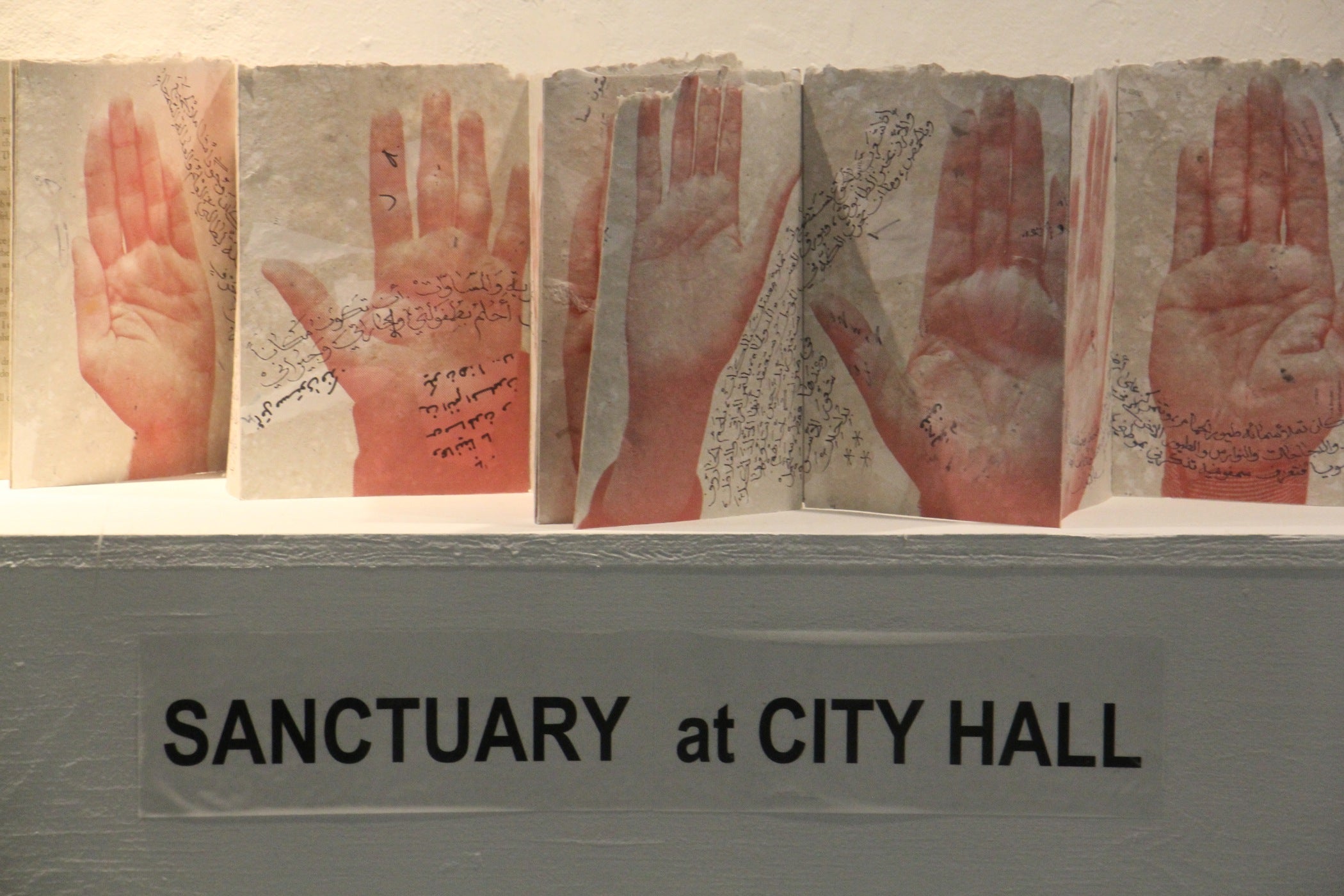
Project hopes to break stereotypes about refugees
Diab said she worries some people see refugees as burdens on their new country’s public resources, and hopes the artwork she created will help shatter that stereotype and show instead what she can contribute.
Making art has also helped the refugees process their displacement.
Diab used the sewing skills that once helped her put food on the table to make an elegant lace wedding gown. News images of bombed-out Syrian streets and men armed with rifles hide beneath the white lace.
She said the piece, called “Refugee Wedding,” represents the trauma that lingers with people like her even as they move forward with their lives.
“The life of a refugee is not stable,” said Fouad Sakhnini, a Palestinian refugee born in Syria who later fled to Thailand. “It can change with any political change in the country you are living in.”
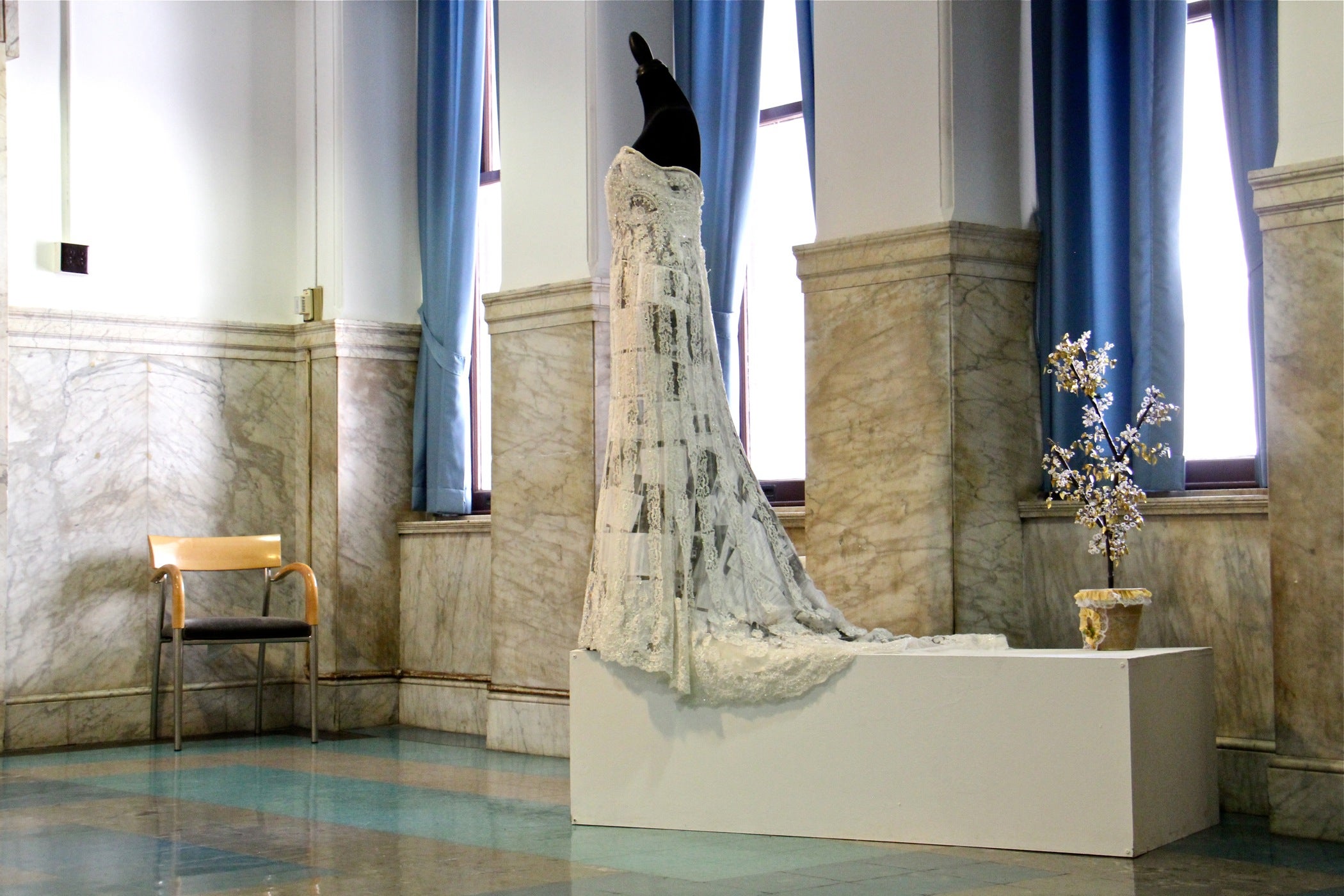
He said that he can’t do anything about the circumstances that caused him to be displaced, and that he’s trying to make the U.S. his new home.
Sakhnini described one papermaking exercise that stood out for him.
“We wrote something very sad on that paper,” he said. “We shredded that paper and … we draw on it, we paint on it.”
The process of taking that sad memory of displacement and making something beautiful out of it runs parallel to refugees’ journeys, Sakhnini said.
“I think the symbolism of this is very important,” he said.
While creating their art pieces, the refugees often talked about the things they wish they’d known when they first came to the U.S.
Sakhnini said the group helped put together a handbook that goes beyond the rudimentary advice to take English classes.
“For example, how to start your credit, how to find a job, where to apply,” he said.
The handbook might be more handy to future refugees. Project participants said they realize their stories won’t get rid of stereotypes overnight.
Still, Al-Obaidi said he would be satisfied if they reach at least one person with the message that refugees didn’t leave their home countries by choice — and that they have much to share with their new countries.
“This one person can maybe talk to family, this family maybe can talk to someone else,” he explained. “The community is like this. Even the stereotypes started like this.”
The “Friends, Peace, & Sanctuary” exhibitions will be at City Hall through July 26, the Free Library of Philadelphia through Aug. 2, and at 12 Gates Arts through Aug. 15.
WHYY is your source for fact-based, in-depth journalism and information. As a nonprofit organization, we rely on financial support from readers like you. Please give today.


